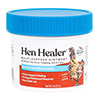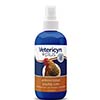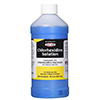Frostbite In Chickens: Causes, Prevention, Treatment
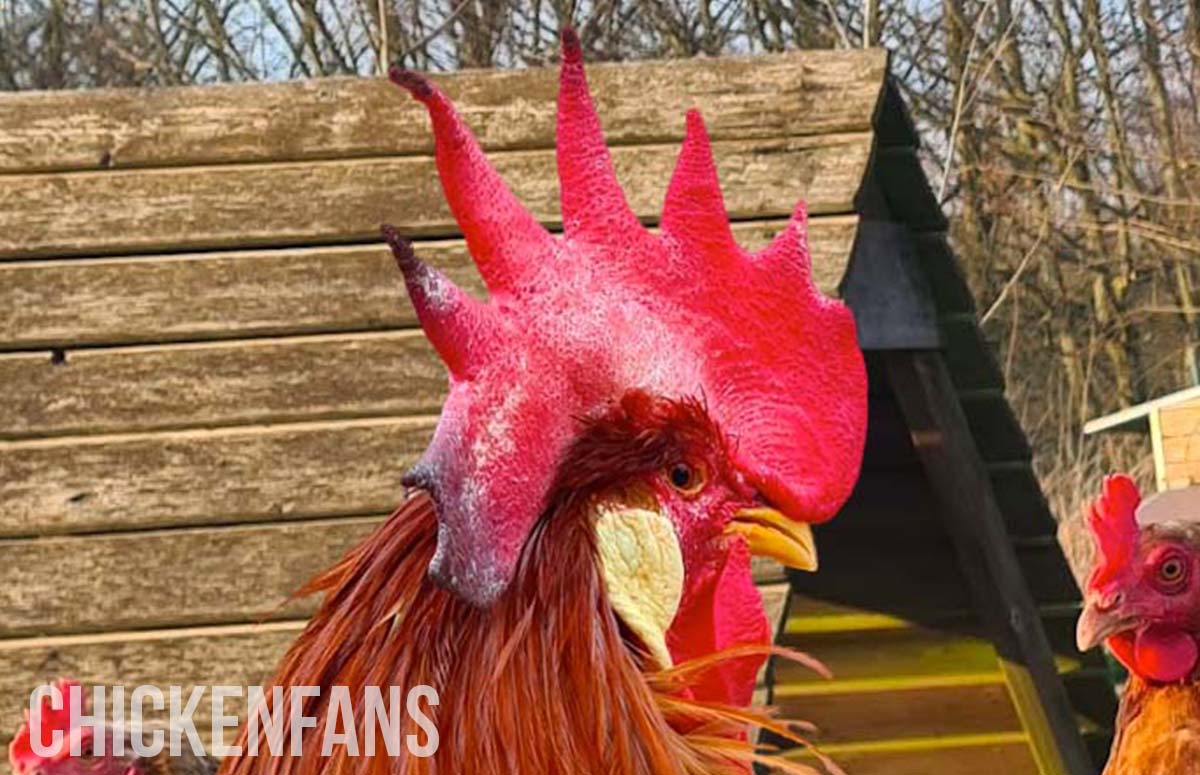
Chicken Fans is reader-supported. When you buy through our links, we may earn a commission. Learn more about our privacy policy and disclaimer.
Keeping chickens can be straightforward or challenging, depending on your area and climate. Frostbite is a significant concern that can arise if precautions aren’t taken during extreme winters. It’s crucial to be well-informed about frostbite to ensure the well-being of your flock.
If you’ve set your chicken coop with the proper ventilation and insulation and have the right chicken breeds for your climate, you’ll hardly ever think of frostbite as a risk for your birds. On the other hand, if your setup isn’t quite right, you may soon find yourself battling to save your chickens from a lot of pain and maybe even death.
What is Frostbite in Chickens?
Frostbite is a serious condition that can affect chickens during cold winters. It occurs when the body’s tissues freeze due to exposure to cold temperatures. The most common areas affected by frostbite in chickens are the comb, wattles, and toes.
First Aid for Frostbite in Chickens
What Does Frostbite in Chickens Look Like?
It can sometimes be tricky to notice frostbite in your chickens immediately if you don’t know what you’re looking for. Most people are looking for a blackening of the flesh, but it can also be whitening or lightening too.
Often, the flesh turns pale and into a gray, yellowish, or blueish color. Some swelling is also expected, as are blisters, a loss of appetite, and limping if the frostbite has affected the chicken’s toes or legs. The affected spot will also be harder and colder as it’s frozen over, but it’s important not to touch it as you don’t want it to break.
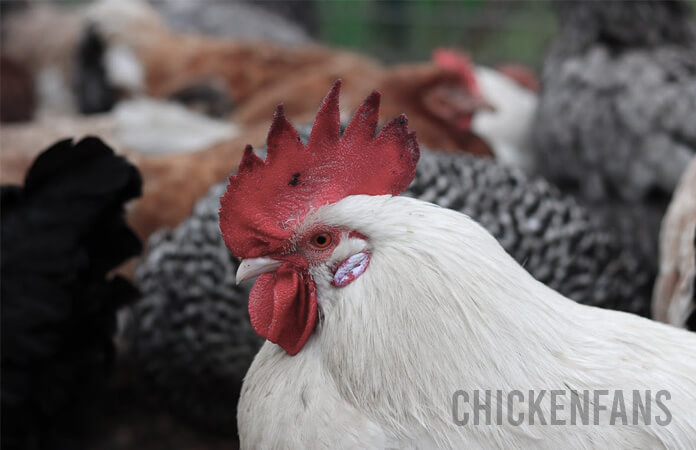
In principle, frostbite in chickens isn’t really different from frostbite in people or other animals. Frostbite happens when the body, especially certain parts of it, is exposed to such low temperatures that the liquid in the animal’s tissues freezes over. Once that happens, blood can no longer flow through those areas, and the cells there get deprived of oxygen. From then on, the road to cell and tissue death is short and painful.
Because frostbite freezes the tissue and reduces the blood supply, it also increases the risk of blood clots and thrombosis. Naturally, while the frostbite itself is localized and not directly life-threatening, a case of thrombosis can be very dangerous for your chicken.
Another major health risk comes from infections. This is especially likely if you cut off the frostbitten area or if you let it break off as it will expose the healthy tissue underneath. This can leave the chicken vulnerable to the infective organisms in the air. This is something to especially be careful about when you return the chicken to the coop, as its pen mates will often try to peck at the frostbitten areas out of curiosity.
In people, it’s our toes, fingers, nose, and ears that are at the most risk of frostbite. In roosters and hens, however, it’s the comb, wattles, and toes. If this is allowed to happen and the affected chicken isn’t treated fast enough, major sections of the frostbitten body parts may need to be amputated.
What Causes Frostbite in Chickens?
Low temperatures near or below 32°F or 0°C, along with factors like wind chill, air humidity, duration of exposure, extent of exposure, overall health, and chickens’ age, cause frostbite in chickens.
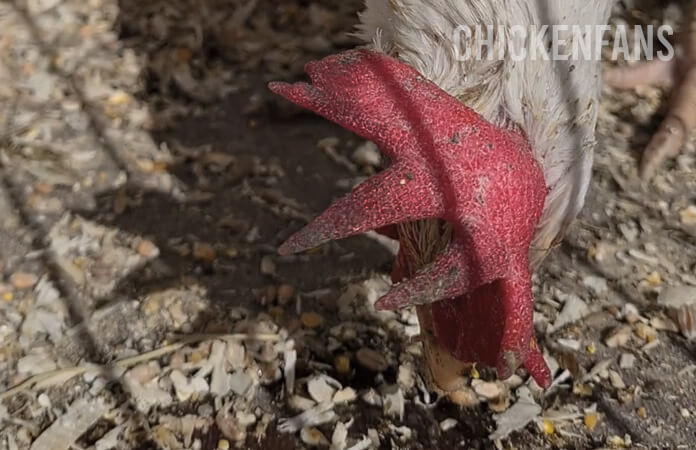
At first, it may seem only low temperatures cause frostbite, but there are other factors to consider:
- Wind chill: The cooling effect wind has when blowing on a surface, as explained by NOAA here, can make it feel much colder.
- Air humidity: Higher moisture levels in the air worsen the effects of frostbite.
- The duration of exposure: The longer your chickens get exposed to freezing temperatures, the worse off they’ll be.
- How much of the chickens’ body was exposed: Often, it’s just a part of the chicken that’s affected. This can happen when a few drops of water have fallen on its wattles while drinking, for example, or when the chicken’s feet have gotten wet.
- The overall health and age of the bird: Younger and healthier birds fare better under suboptimal conditions. Of course, this isn’t an excuse not to care for a young flock, but it’s important to note.
- The temperature itself: This is the key factor, obviously. With or without wind chill and with or without high air humidity, if the temperatures start getting near or below 32°F or 0°C, your chickens will be in danger.
In short, frostbite in chickens is almost always caused by improperly winterized chicken coops and runs. We’ll elaborate a bit further on that below when we talk about frostbite prevention.
Treatment for Frostbite in Chickens
Of course, frostbite can and should be treated, but there are quite a few do’s and don’ts you need to keep in mind. Let’s start with the things you’d want to do when you notice even just a bit of frostbite in a rooster or a hen:
- Move the affected chicken to a warmer location or find a safe way to raise the temperature in the chicken coop.
- Call your vet immediately for advice – they will know best the specifics of your chickens, situation, and overall environment.
- Hydrate the chicken properly – both immediately after the incident and regularly in the coming days after that. Adding electrolytes and vitamins to the water is also beneficial.
- Warm up the frostbitten areas slowly and carefully. It’s usually best to use lukewarm water (around 101°F or 38°C) for your chicken’s toes and feet for ~20 minutes. For the comb and wattles, you can use washcloths dipped in that same lukewarm water, although you should be very careful not to harm those sensitive areas with your touch.
- Monitor the affected area closely in the coming days to make sure your bird is recovering and isn’t developing any further problems such as swelling or an infection.
- Keep the frostbitten area clean, ideally with a chlorohexidine spray (~2% solution) or Vetericyn Poultry Spray.
- Talk with your vet about pain and anti-inflammatory medicine if your chicken appears visibly distressed (limping, loss of appetite, etc.). Do NOT self-prescribe painkillers for your chicken, as many of those can be deadly to poultry birds.
Some chicken owners like to cover the combs and wattles with petroleum jelly or Vaseline. It has never been proven this method works, and it can do more damage than good in severe colds. You can make the feathers around the head sticky and attract moisture to the comb. Never cover severely damaged areas with petroleum jelly.
Coop management is the only reliable prevention method for frostbite.
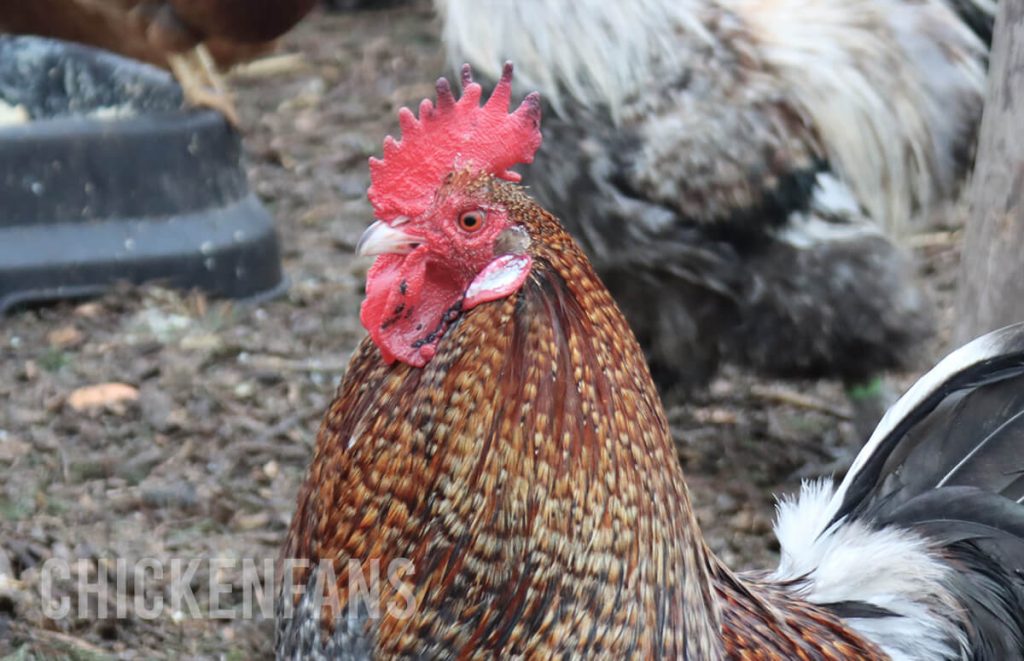
When addressing frostbite in chickens, it’s important to strike a balance between humane considerations and being realistic. In cases where a chicken’s feet have turned completely black and are no longer functional, the most compassionate approach involves the humane euthanasia of the affected bird. Ask your veterinarian for advice or help.
Don’ts to Avoid at all Costs:
- Don’t use direct heat to warm your chicken up or thaw the frostbitten area (heat lamps/pads, hair driers, etc.), as that will likely cause further damage.
- Don’t rub, massage, or unnecessarily touch the affected body parts, as that can damage them or accidentally break them off.
- Don’t try to cut off the frostbitten parts.
- Don’t start the warming process until you’ve moved the chicken to a generally warmer area. In other words, if you want to use the lukewarm water treatment, don’t do it while the chicken is still in the cold coop.
- Don’t break off or pop any blisters you might notice around the affected area. Those serve a crucial protective purpose, keeping the tissue underneath safe.
If you follow the former and avoid the latter, your chicken should start feeling better in about a day or two. However, you must likely wait several weeks or months for the chicken to recover. That’s normal, even with the best possible care, as frostbitten flesh doesn’t heal quickly.
How to Prevent Frostbite in Chickens?
To prevent frostbite, reduce the risk factors as follows:
- Insulate the coop properly so that even during the nighttime, temperatures don’t get too much below 32°F or 0°C. Keep your chickens inside during extreme cold, even during the daytime.
- Ventilate the coop adequately, as that prevents moisture build-up.
- Clean/change the chicken litter regularly, as a bit part of the moisture in a chicken coop comes from the chickens’ excrement. It’s also wise to consider a chicken litter that evaporates quickly but retains warmth, such as sand.
- Monitor your coop’s humidity level with a hygrometer or check the windows for condensation. Most chickens have no problem with cold temperatures, but in combination with high humidity, frostbite can happen overnight.
- Install dropping boards inside the coop to further help eliminate the humidity inside.
- Don’t leave waterers inside the coop, as that will only ramp up the humidity; chickens don’t drink overnight, so while it’s important that they are well-hydrated, leave that for the daytime hours.
- Avoid fire hazards such as heat lamps
If you really need to use heaters, make sure they are secured. You can also temporarily keep the birds inside a warmer area like the garage or shed.
With proper management, even chickens with a large single comb can cope with very harsh winters. Here is one of our Marans chickens tasting snow with a perfectly healthy comb.
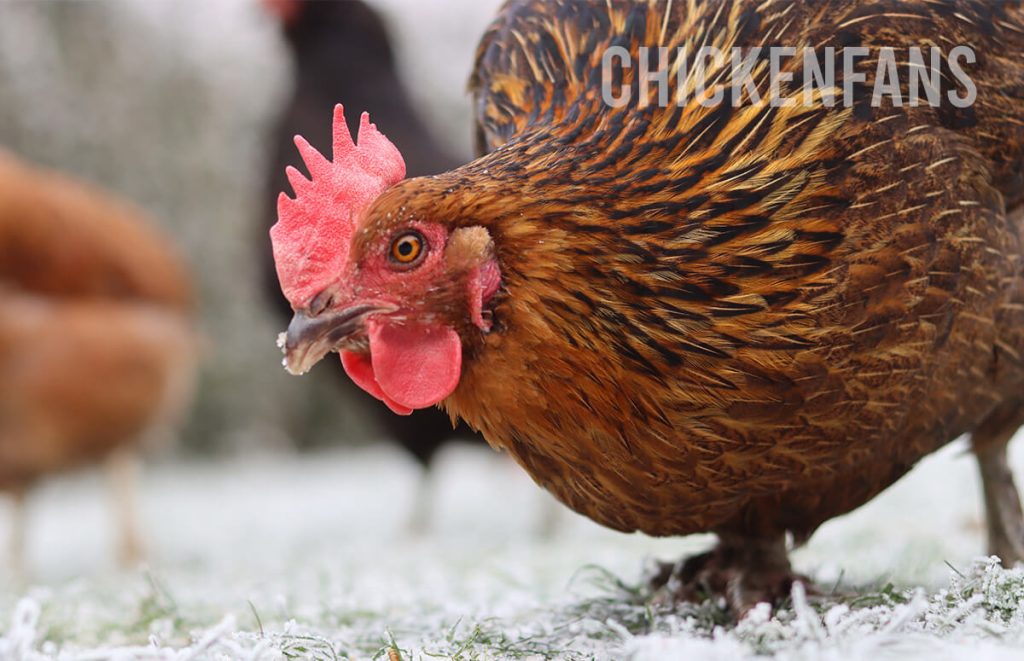
Last but not least: inspect your chicken’s combs, wattles, and legs every morning so you can catch any potential problem at the earliest possible moment.
Are Some Chicken Breeds More Susceptible to Frostbite?
You may have heard of chicken breeds that are near-immune to frostbite while others are more susceptible. Unfortunately, that’s a myth, as every chicken can get frostbite if it isn’t protected well enough.
Even hens with smaller combs than roosters can get frostbite on their legs, wattles, and combs. That said, some chicken breeds are more cold-hardy, primarily because they have smaller combs. Heavily feathered breeds, like Brahmas are also more cold-hardy.
The breeds you’ll most often see mentioned as “cold resistant” include Plymouth Rock, Dominique, Australorp, Orpington, Wyandotte, New Hampshire Red, Delaware, Pavlovskaya, Welsummer, and Rhode Island Red.
Nevertheless, while these generally fare better in colder climates, they are not “resistant” to frostbite. They have smaller combs and/or a more feathery body. If you neglect the temperature and environment in their chicken coups during the winter months, however, you likely will see quite a bit of frostbite in your flock.
Breeds less fond of cold temperatures are Mediterranean and other breeds like Andalusian, Ancona, White Faced Black Spanish, Sicilian Buttercup, and Crevecoeur.
In conclusion
Frostbite is rarely deadly for chickens when noticed and addressed soon enough. It is painful for your birds, however, even if chickens don’t show pain like we do.
Moreover, frostbite is an excellent telltale sign that your chicken’s environment isn’t up to par. In that sense, you can view frostbite as “a last-minute warning” that you need to fix the insulation and ventilation in the chicken coop as soon as possible, or your chickens may be in even more trouble soon.
